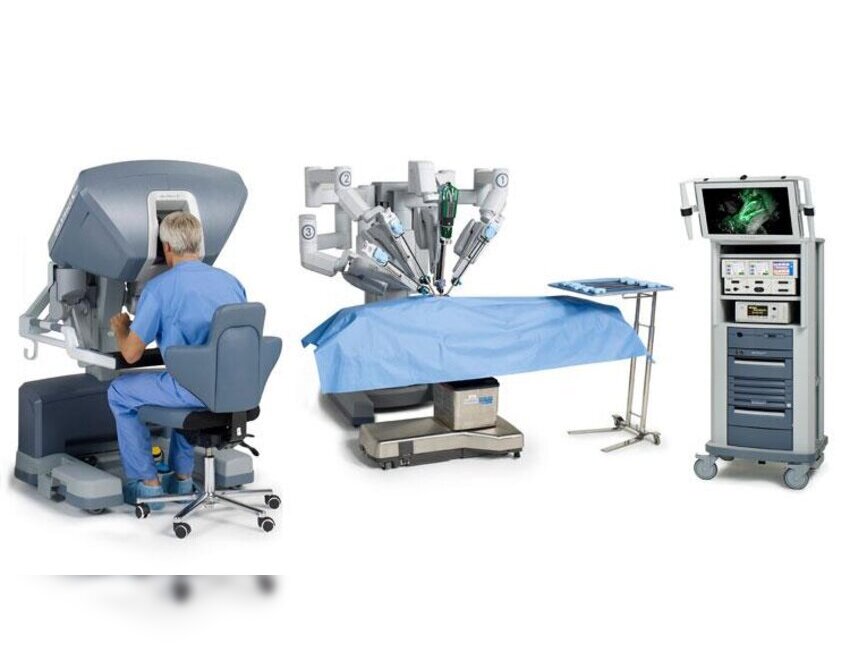
Mumbai, a leading hub for medical advancements in India, is home to some of the most skilled robotic surgeons. A robotic surgeon in Mumbai specializes in minimally invasive procedures using advanced robotic systems like the da Vinci Surgical System. These systems enhance precision, flexibility, and control, allowing surgeons to perform complex surgeries with minimal incisions.
Patients benefit from reduced pain, faster recovery times, and minimal scarring, making robotic surgery a preferred option for various treatments, including urology, gynecology, oncology, and general surgery. Robotic techniques provide surgeons with a high-definition 3D view of the surgical site, improving accuracy during delicate procedures.
Several reputed hospitals and clinics in Mumbai offer access to experienced robotic surgeons, who have undergone rigorous training to master this cutting-edge technology. These specialists use their expertise to ensure safer outcomes for patients with conditions requiring intricate surgical intervention.
Choosing a skilled robotic surgeon in Mumbai ensures patients receive world-class care with state-of-the-art technology. Whether you need surgery for a hernia, prostate cancer, or complex gynecological issues, robotic surgery provides a less invasive and highly effective solution.
If you’re considering robotic surgery, consult with a trusted robotic surgeon in Mumbai to discuss the procedure, its benefits, and how it can be tailored to your specific needs. Their expertise and the city’s advanced healthcare infrastructure make Mumbai an ideal destination for robotic-assisted surgeries.
Robotic surgery typically involves four key stages, each designed to ensure precision and successful outcomes. Here’s a brief overview of each stage:
1. Preoperative Planning
The surgeon evaluates the patient’s condition, conducts imaging studies (like CT or MRI scans), and plans the surgical approach. This stage involves marking the areas for incision and determining the placement of robotic instruments.
2. Patient Preparation
The patient is positioned on the operating table, and anesthesia is administered. Small incisions are made to insert robotic arms and the camera. The surgical team ensures that the robotic system is correctly set up and calibrated.
3. Surgical Procedure
The surgeon operates the robotic arms from a console, controlling the instruments with high precision. The robotic system provides a magnified 3D view of the surgical site, allowing the surgeon to perform intricate movements through tiny incisions.
4. Postoperative Care
After the surgery, the robotic instruments are carefully removed, and the incisions are closed. The patient is monitored for recovery, with most experiencing minimal pain and faster healing. Postoperative instructions are provided for care at home.
Each stage plays a vital role in ensuring the safety and effectiveness of robotic surgery, making it a revolutionary approach to modern surgical care.
Dr. Chintamani Godbole emphasizes several key precautions and benefits associated with robotic surgery, particularly for conditions like rectal cancer. Here are the highlighted suggestions:
- Precision and Accuracy: Robotic surgery enables higher precision due to its advanced instrumentation, which eliminates tremors and enhances accuracy. This is crucial in surgeries involving delicate areas such as the rectum surrounded by vital organs like the bladder and reproductive structures.
- Patient Preparation: Patients should follow a tailored pre-surgical protocol, including fasting, hydration, and necessary pre-operative tests, to ensure safety during minimally invasive procedures.
- Post-Surgical Recovery: Since robotic surgery involves smaller incisions, patients generally experience faster recovery, less pain, and reduced hospital stays. However, adhering to the surgeon’s recovery plan, including wound care and physical activity restrictions, is vital.
- Specialist Expertise: Dr. Godbole suggests consulting with experienced robotic surgeons to ensure optimal outcomes, particularly for complex cases like colorectal cancers, where robotic techniques can preserve critical functions while achieving effective tumor removal.
For more detailed information about Dr. Godbole’s approach to robotic surgery, visit his official website: Dr. Chintamani Godbole – Robotic Surgery.
Dr. Chintamani Godbole’s clinic is located at Gadre Hospital, near Hindmata Cinema, Dadar East, Mumbai, Maharashtra 400014.
Easy Ways to Reach the Clinic:
- From the Western Line:
- Take a train to Dadar station (Western Line).
- Exit towards the East and take a taxi or walk to Gadre Hospital, which is approximately 10 minutes away.
- From the Central Line:
- Alight at Dadar station (Central Line).
- Follow the same route as above to the hospital.
- For Patients Outside Mumbai:
- Arrive at Mumbai’s Chhatrapati Shivaji Maharaj Terminus (CSMT) or Mumbai Airport.
- Take a taxi or public transport directly to Gadre Hospital in Dadar East.

